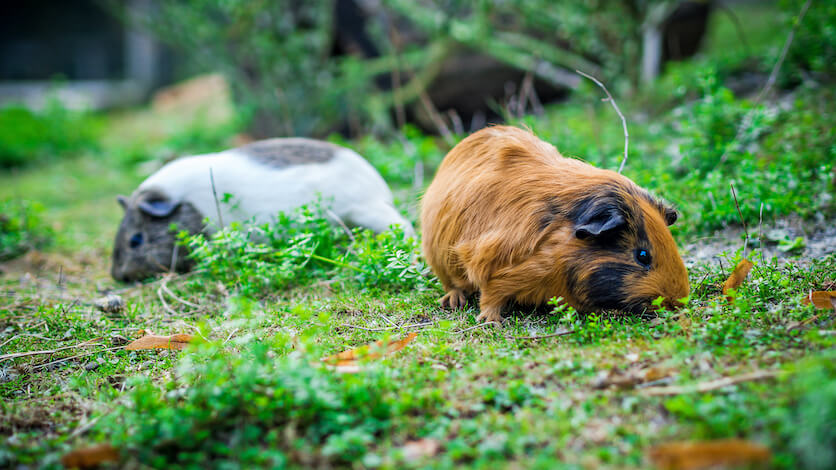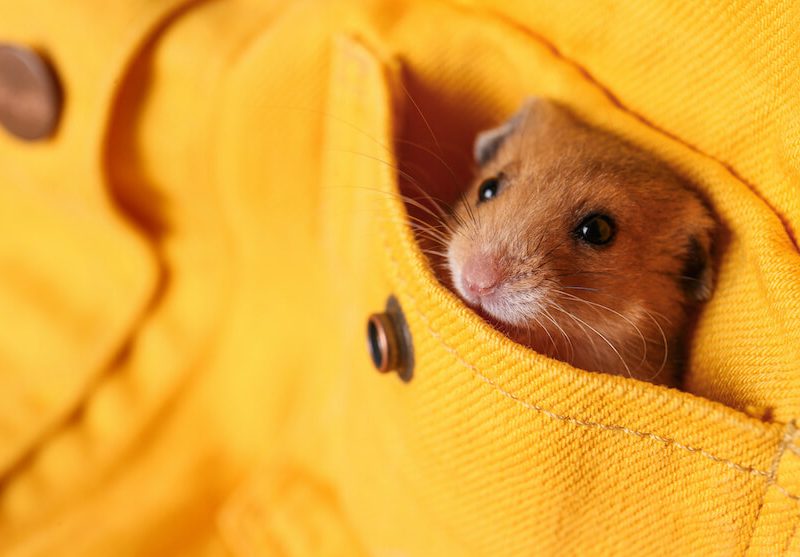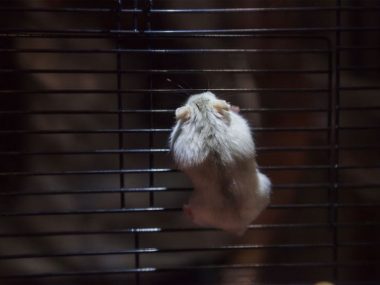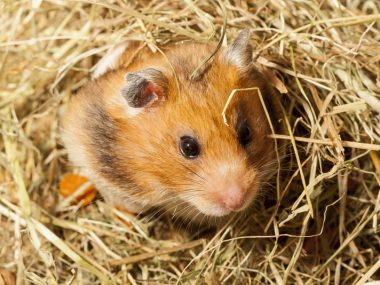What would you say if we told you hamsters traveled underfoot with Mammoths and other Miocene animals? What we know as pets today was once something completely different millions of years ago! So where did hamsters come from? Let’s investigate together!
Table of Contents
Where Do Hamsters Come From?
Our cute little pet hamsters have a long lineage that goes back to ancient times. Hamsters fall within one of several groups. To better understand where they come from, you must first identify what group they belong to.
The Origin Of The Hamster
The Molecular Phylogenetics and Evolution Journal aptly explains where various species of hamsters originated. Researchers utilized reverse engineering to track down the hamsters’ lineage and where each species originated. The journal sheds some very intriguing insight.
Hamsters belong to a sub-family of the rodent family. This sub-family is known as Cricetinaea. Research on the ancestral lineage of hamsters has been done based on fossil findings and genetic tests.
Parental Species: Where It All Began
Researchers who closely traced the origin of the hamster placed two species of rodents as the “root” (parental) species from which all hamster species originated. Peromyscus leucopus and Clethrionomys glareolus were responsible for rearing children who went on to become what we know as hamsters.
The epicenter of the evolution of hamster species began in the grasslands of Asia about 7-12 million years ago during the Miocene period. The divergence of species began peaking after the Pliocene and Pleistocene periods.
This divergence was due to the drastic change in flora and fauna during the Miocene period caused by global changes. During this time, the tectonic plates shifted, resulting in the Tibetan plateau. This plateau placed a barrier in Eurasia, further leading to changes in the climate.
Today’s Hamster Species
So, now we come to our current hamster species that we know and love today. We have broken those down with when they were officially recorded as a species, where their native range, their common names, and where their origin began.
Genus: Allocricetulus (Mongolian hamsters)
Common name(s:)
- Mongolian
- Eversmann
Officially recorded: 1933
Native range: Europe, Asia (excluding China)
Originated in: Saratov, Russia
Genus: Cricetulus (One group of dwarf hamsters)
These hamsters (with the exception of the Chinese) are not typically kept as pets.
Common name(s:)
- Striped (origin: Mongolia)
- Long-Tail (origin: Russia)
- Lesser Long Tailed (origin: Russia)
- Migratory and Gray Dwarf (origin: Anatolia Turkey and Volgograd Russia)
- Chinese (origin: hybrid from selective breeding)
Officially recorded: 1867
Native range: Europe, Asia
Genus: Cricetus Leske (Common)
These hamsters are not typically kept as pets.
Common name(s:)
- Black-bellied
- Common
Officially recorded: 1779
Native range: Europe, Asia (excluding China)
Originated in: Hakel, Saxony-Anhalt/Germany, and Mozdok, Ossetia/Russia
Genus: Mesocricetus (Golden)
The Golden (Syrian, Teddy Bear) is the most common pet hamster. The other hamsters (Brandt, Romanian, Ciscaucasian) are not typically kept as pets.
Common name(s:)
- Golden (Syrian, Teddy Bear) (origin: Aleppo, Syria)
- Brandt (origin: Anatolia, Turkey)
- Romanian (origin: Shumen, Bulgaria)
- Ciscaucasian (origin: Mozdok/Ossetia, Russia)
Officially recorded: 1898
Native range: Syria, Europe, Asia (excluding China)
Genus: Phodopus (Other groups of dwarf hamsters – Small desert hamsters)
These hamsters are kept as pets.
Common name(s:)
- Djungarian (Striped Desert)
- Subspecies/Hybrids
- Winter White Russian
- Sunfire Djungarian
- Subspecies/Hybrids
- Campbell
- Roborovski
Officially recorded: 1910
Geographic Range: Europe, Asia (excluding China)
Originated in: these are hybrids created from selective breeding.
Genus: Tscherskia Ogney
This hamster is not typically kept as a pet.
Common name(s:)
- Greater Long-Tailed
Recorded: 1914
Native range: Europe, Asia (excluding China)
Originated in: Ussuriysk/Russia
How Far Back In History Do Hamsters Go?
According to the Molecular Phylogenetics and Evolution Journal, hamsters date back 7-12 million years ago. Their parental species go back even further.
Do Pet Store Hamsters Come From The Wild?

This is a great question because many people wonder whether those hamsters in our local pet stores are caught in the wild and imported. Ethical pet stores purchase hamsters from reputable breeders. Unfortunately, some hamsters are marketed/sold, which have been acquired from pet mills or the black animal trade market. The black animal trade sources their animals straight from the wild and illegally imports them into different countries.
Are Wild Hamsters Different Than Domestic?
Wild hamsters are those living in their native habitat, which is Eurasia. Accidental introductions of domestic hamsters are known to exist in many countries where pet owners release their hamsters into the wild because they no longer want them. A domestic hamster is one that is kept as a pet or raised in captivation.
Where Do Hamsters Live In The Wild?
In the wild, hamsters live mainly in Eurasia (excluding China). They live in the wild in their native range in underground burrows, which are all connected by a series of tunnels. These tunnels lead to areas where they nest and keep food. They are nocturnal and use the darkness of the night to go out and forage for food. They can travel numerous miles in one night while looking for food.
Why Do Hamsters Die So Easily?
Hamsters have a short lifespan of about 1-2 years. In the wild, they are highly vulnerable as prey. Some hamsters, such as Roborovskis, freeze when overly stressed, making them even more prone to being preyed upon. Pet hamsters jump out of their owner’s hands, falling from heights that can severely injure or kill them. Some get loose inside the house and chew on electrical cords or other things that can also kill them.
Hammies Have Been Around A Long Time!
Now you not only know how far back hamsters go, but where various species originated from. And in answer to one of the most common questions, “Do hamsters still live in the wild;” yes, they are still thriving in their native ranges today. These little guys aren’t as new as some may think.






